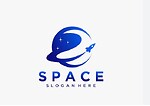Description
NASA (National Aeronautics and Space Administration) has been at the forefront of technological innovation for decades, developing a wide range of technologies that have not only advanced space exploration but have also contributed to various aspects of everyday life on Earth. Here are a few notable NASA technologies:
1. **Spacecraft Design and Propulsion Systems:** NASA has developed advanced spacecraft designs, such as the Space Shuttle, Apollo capsules, and the Mars rovers. These designs incorporate cutting-edge materials, thermal protection systems, and propulsion technologies that enable safe and efficient travel in space.
2. **Satellite Technology:** NASA has been a pioneer in developing satellites for Earth observation, communication, weather forecasting, and scientific research. These satellites provide invaluable data for various industries and research fields.
3. **Global Positioning System (GPS):** While not solely developed by NASA, GPS technology was significantly enhanced by NASA's work in satellite navigation. GPS is used worldwide for navigation, location-based services, and synchronization of various technologies.
4. **Scratch-Resistant Lenses:** NASA's work on improving astronaut helmet visors led to the development of scratch-resistant coatings for eyeglasses and other optical applications.
5. **Memory Foam:** Originally developed to provide better cushioning and crash protection for astronauts, memory foam is now widely used in mattresses, pillows, seating, and medical equipment.
6. **Tang and Freeze-Dried Foods:** While the story of Tang being developed for astronauts is a bit of a myth, NASA did contribute to the development of freeze-drying techniques for food, which have led to the creation of portable, lightweight, and long-lasting food products.
7. **Advanced Materials:** NASA has developed and used a variety of advanced materials for spacecraft construction, including lightweight composites, heat-resistant ceramics, and super-strong alloys. These materials have found applications in industries like aviation and manufacturing.
8. **Medical Imaging Technology:** Techniques originally developed for enhancing images of the Moon's surface led to the development of technologies like CAT scans and MRIs, revolutionizing medical diagnostics.
9. **Solar Panels:** NASA's work on solar power for space missions has influenced the development of efficient solar panels used for generating electricity on Earth.
10. **Water Purification Systems:** The technology used to purify water for astronauts in space has been adapted for use in filtering and purifying water in remote or disaster-stricken areas.
11. **Robotic Arm Technology:** The Canadarm, originally developed for the Space Shuttle program, laid the foundation for advanced robotic arm technology used in various industries, including manufacturing, medicine, and space exploration.
12. **Aerodynamic Innovations:** NASA's research into aerodynamics and supersonic flight has led to advancements in aircraft design, improving fuel efficiency, reducing noise, and increasing safety.
These are just a few examples of the many technologies that NASA has developed or contributed to over the years. The agency's commitment to pushing the boundaries of science and engineering continues to drive innovation and benefit society both within and beyond space exploration.
Additional Details
Joined Aug 26, 2023
24 total views
1 video

